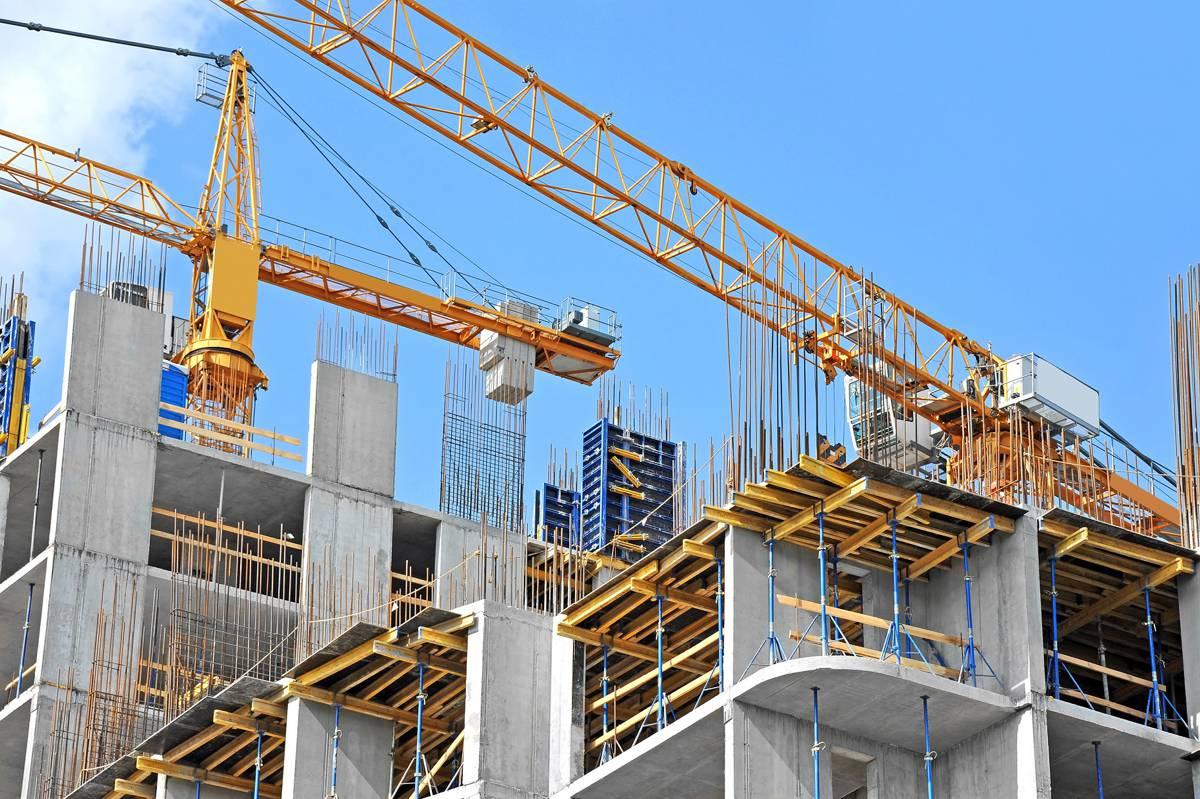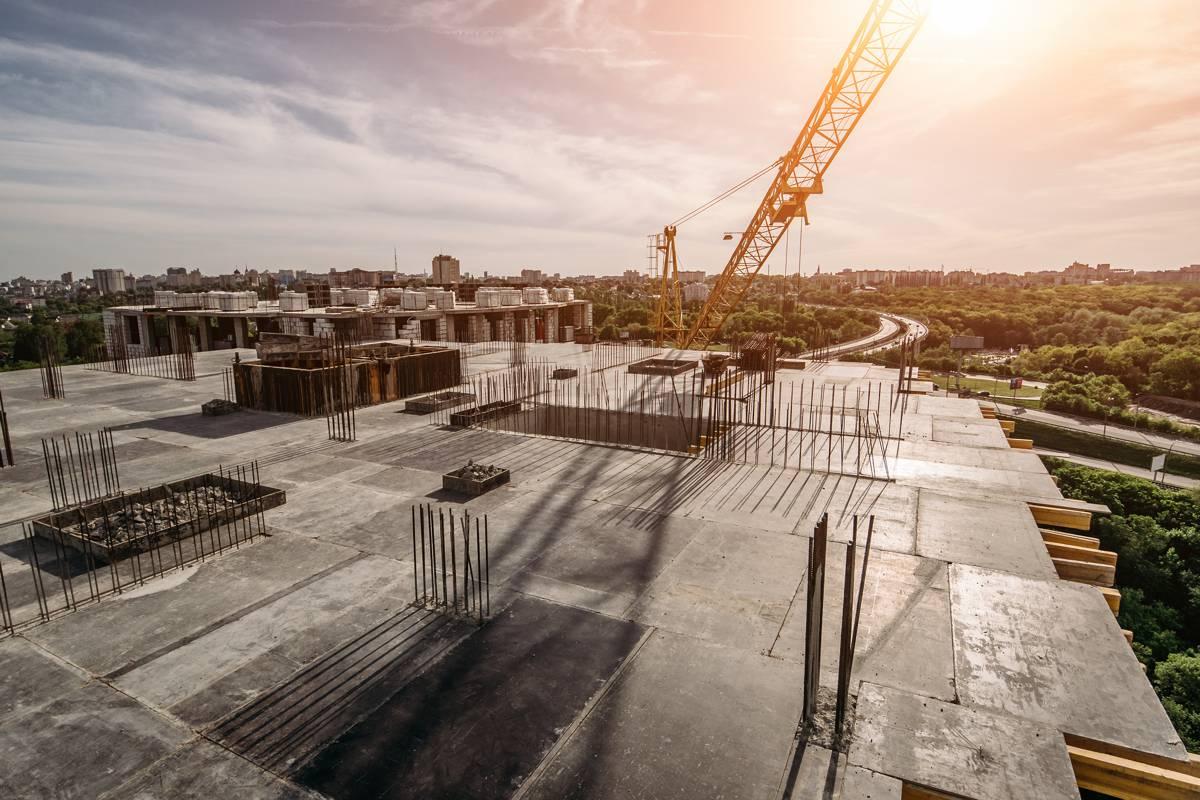The Danger of Concrete Overprotection Repairs
 20/23/23-FR-English-NL-footer
20/23/23-FR-English-NL-footer
Le danger des réparations de surprotection du béton

 Image- Cortec MCI
Image- Cortec MCI
Est-il possible de donner au béton une protection excessive contre la corrosion des armatures ? Les recherches indiquent qu’il en est ainsi, même s’il n’existe aucun consensus sur les mécanismes exacts et sur la manière de l’éviter.
Cependant, suivant un raisonnement logique, Cortec® recommande d'appliquer des inhibiteurs de corrosion migrant pour atténuer le problème.
Qu’est-ce que la surprotection ?
La surprotection se produit lorsque les armatures métalliques d’une partie du béton sont plus protégées que d’une autre. Cela peut se produire lorsqu'une nouvelle couche de béton est posée, remplaçant le béton contaminé ou carbonaté par du béton non contaminé ayant un pH élevé et donc un environnement alcalin naturellement protecteur.
La différence de potentiel de corrosion qui en résulte entre la pièce rapportée et le béton adjacent conduit finalement à une corrosion dans les zones environnantes, transférant ainsi le problème initial ailleurs. C’est ce qu’on appelle l’effet anode annulaire/halo.
La surprotection peut également se produire de diverses autres manières. La première passe par la pratique courante de la protection cathodique (CP). Le défi consistant à calculer le nombre approprié d'anodes pour une zone et à retirer le béton pour les installer est aggravé par le fait qu'il n'est pas possible d'accéder à toutes les parties des barres d'armature et de les traiter de la même manière.
Cela laisse certaines parties du renfort métallique avec plus de protection que d'autres, un déséquilibre qui pourrait se manifester au fil du temps par de la corrosion dans les zones moins protégées.
Un effet similaire peut se produire lors de l’application d’un revêtement époxy sur une partie d’une barre d’armature et non sur une autre. L'utilisation d'autres mesures de protection contre la corrosion peut provoquer un déséquilibre similaire en cas d'application excessive.
Égalisez le potentiel de corrosion
L’utilisation des inhibiteurs de corrosion appliqués en surface (SACI) MCI® facilite l’équilibrage du potentiel de corrosion. Plutôt que de laisser une zone bien protégée entourée de béton contaminé par des chlorures, les entrepreneurs peuvent appliquer MCI®
Heureusement, les SACI MCI® sont faciles à appliquer par pulvérisation sur le béton comme un traitement de surface standard. Au fil du temps, les inhibiteurs de corrosion migrant dans le MCI® SACI pénètrent plus profondément à travers les pores du béton vers le renfort métallique. Leur affinité avec le métal leur permet de former une couche moléculaire protectrice sur les barres d'armature encastrées lorsqu'elles les rencontrent.
MCI®-2020 contient la plus forte concentration d’inhibiteurs de corrosion migrateurs appliqués en surface sur le marché et est donc le SACI numéro un recommandé à cet effet. En règle générale, un revêtement ou un hydrofuge doit être appliqué par-dessus pour empêcher l'humidité d'entrer et le MCI® de pénétrer.
Des hydrofuges deux-en-un MCI®/hydrofuges sont également disponibles pour plus de commodité, mais avec des doses plus faibles d'inhibiteurs de corrosion migrateurs (MCI®-2018 combine le MCI® avec un hydrofuge 100 % silane, et MCI®-2019 combine le MCI® avec un hydrofuge à 40% de silane).
Adoptez une approche équilibrée en matière de protection contre la corrosion
En s'assurant de protéger le béton autour de la zone de réparation avec des inhibiteurs de corrosion migrateurs, les entrepreneurs peuvent prendre une longueur d'avance sur la réaction en chaîne de la corrosion qui est courante dans les zones moins protégées.
NJC.© Info Cortec MCI
----------------------------------------------------------------------------------------------------------------
 20/12/23-English
20/12/23-English
The Danger of Concrete Overprotection Repairs

 Image- Cortec MCI
Image- Cortec MCI
Is it possible to give concrete too much protection against reinforcement corrosion? Research indicates that this is so, although no consensus exists on the exact mechanisms and how to avoid it.
However, following logical reasoning, Cortec® recommends applying Migrating Corrosion Inhibitors to mitigate the problem.
What Is Overprotection?
Overprotection occurs when metal reinforcement in one part of the concrete is more protected than in another. This can happen when a new concrete patch is laid, replacing contaminated or carbonated concrete with uncontaminated concrete that has a high pH and therefore a naturally protective alkaline environment.
The resulting difference in corrosion potential between the patch and the adjacent concrete eventually leads to corrosion in surrounding areas, thus transferring the original problem elsewhere. This is known as the ring anode / halo effect.
Overprotection can also happen in a variety of other ways. One is through the common practice of cathodic protection (CP). The challenge of calculating the appropriate number of anodes for an area and removing concrete to install them is compounded by the fact that it is not possible to gain access to and treat all parts of the rebar equally.
This leaves some portions of the metal reinforcement with more protection than others, an imbalance that could show itself over time by corrosion in areas with less protection.
A similar effect may happen with the application of an epoxy coating to one part of a rebar and not to another. Using other corrosion protection measures may cause a similar imbalance when over-applied.
Even Out the Corrosion Potential
The use of MCI® Surface Applied Corrosion Inhibitors (SACIs) makes it easier to balance out the corrosion potential. Rather than leaving a well-protected patch surrounded by chloride-contaminated concrete, contractors can apply MCI®
Fortunately, MCI® SACIs are easy to apply by spraying onto the concrete like a standard surface treatment. As time progresses, Migrating Corrosion Inhibitors in the MCI® SACI work their way deeper in through the concrete pores toward the metal reinforcement. Their affinity to metal allows them to form a protective molecular layer on the embedded rebar when they encounter it.
MCI®-2020 contains the highest concentration of surface applied Migrating Corrosion Inhibitors on the market and is therefore the number one recommended SACI for this purpose. Typically, a coating or water repellent should be applied on top of this to keep moisture out and MCI® in.
Two-in-one MCI®/ water repellents are also available for greater convenience, albeit with smaller doses of Migrating Corrosion Inhibitors (MCI®-2018 combines MCI® with a 100% silane water repellent, and MCI®-2019 combines MCI® with a 40% silane water repellent).
Take a Balanced Approach to Corrosion Protection
By being sure to protect the concrete around the patch area with Migrating Corrosion Inhibitors, contractors can take one step ahead of the chain reaction of corrosion that is common in less protected areas.
NJC.© Info Cortec MCI
-------------------------------------------------------------------------------------------------------------------
 20/12/23-NL
20/12/23-NL
Het gevaar van reparaties van betonoverbescherming

 Image- Cortec MCI
Image- Cortec MCI
Is het mogelijk om beton te veel bescherming te bieden tegen wapeningscorrosie? Onderzoek wijst uit dat dit zo is, hoewel er geen consensus bestaat over de exacte mechanismen en hoe dit te vermijden.
Op basis van logische redenering raadt Cortec® echter aan om migrerende corrosieremmers toe te passen om het probleem te verminderen.
Wat is overbescherming?
Overbescherming treedt op wanneer metalen wapening in het ene deel van het beton beter beschermd is dan in het andere. Dit kan gebeuren wanneer een nieuwe betonpleister wordt aangelegd, waarbij verontreinigd of koolzuurhoudend beton wordt vervangen door niet-verontreinigd beton met een hoge pH en daardoor een natuurlijk beschermend alkalisch milieu.
Het resulterende verschil in corrosiepotentieel tussen de plek en het aangrenzende beton leidt uiteindelijk tot corrosie in de omliggende gebieden, waardoor het oorspronkelijke probleem naar elders wordt overgebracht. Dit staat bekend als het ringanode-/halo-effect.
Overbescherming kan ook op verschillende andere manieren plaatsvinden. Eén daarvan is via de gangbare praktijk van kathodische bescherming (CP). De uitdaging van het berekenen van het juiste aantal anodes voor een gebied en het verwijderen van beton om ze te installeren wordt nog verergerd door het feit dat het niet mogelijk is om toegang te krijgen tot alle delen van de wapening en deze op dezelfde manier te behandelen.
Hierdoor krijgen sommige delen van de metalen wapening meer bescherming dan andere, een onbalans die zich in de loop van de tijd kan manifesteren door corrosie in gebieden met minder bescherming.
Een soortgelijk effect kan optreden bij het aanbrengen van een epoxycoating op het ene deel van een wapening en niet op het andere. Het gebruik van andere corrosiebeschermingsmaatregelen kan bij overdosering een soortgelijke onbalans veroorzaken.
Egaliseer het corrosiepotentieel
Het gebruik van MCI® Surface Applied Corrosion Inhibitors (SACI's) maakt het gemakkelijker om het corrosiepotentieel in evenwicht te brengen. In plaats van een goed beschermde plek achter te laten, omringd door met chloor verontreinigd beton, kunnen aannemers MCI® toepassen
Gelukkig zijn MCI® SACI’s eenvoudig aan te brengen door ze op het beton te spuiten zoals een standaard oppervlaktebehandeling. Naarmate de tijd vordert, werken migrerende corrosieremmers in de MCI® SACI zich dieper door de betonporiën naar de metalen wapening. Door hun affiniteit met metaal kunnen ze een beschermende moleculaire laag op de ingebedde wapening vormen wanneer ze deze tegenkomen.
MCI®-2020 bevat de hoogste concentratie oppervlakte-aangebrachte migrerende corrosieremmers op de markt en is daarom de nummer één aanbevolen SACI voor dit doel. Normaal gesproken moet hier bovenop een coating of waterafstotend middel worden aangebracht om vocht buiten en MCI® binnen te houden.
Twee-in-één MCI®/waterafstotende middelen zijn ook verkrijgbaar voor meer gemak, zij het met kleinere doses migrerende corrosieremmers (MCI®-2018 combineert MCI® met een 100% silaanwaterafstotend middel, en MCI®-2019 combineert MCI® met een waterafstotende silaan van 40%).
Kies voor een evenwichtige benadering van corrosiebescherming
Door ervoor te zorgen dat het beton rond het patchgebied wordt beschermd met migrerende corrosieremmers, kunnen aannemers de kettingreactie van corrosie, die gebruikelijk is in minder beschermde gebieden, een stap voor zijn.
NJC.© Info Cortec MCI
----------------------------------------------------------------------------------------------------------------
Date de dernière mise à jour : 19/12/2023
















